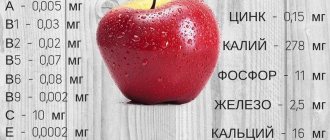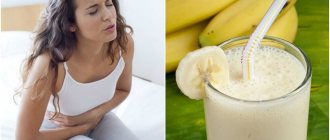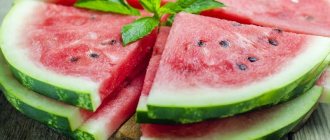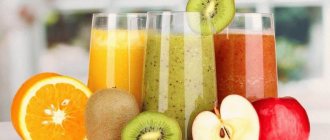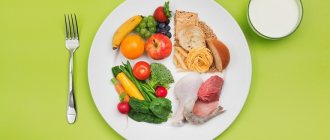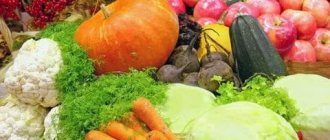Treatment of peptic ulcer disease is not complete without dietary nutrition. It is the basis for improving the patient’s well-being, and also plays a huge role in the complex treatment of pathological formations of the gastrointestinal tract.
One of the largest suppliers of fiber (dietary fiber) to the human body are vegetables. With a duodenal ulcer, it is very important to maintain the natural balance of digestion and peristalsis. The main function in this process is performed by fiber. It is not absorbed by the intestines, ensuring easy passage of feces, eliminating constipation. Fiber is also the main tool for removing harmful substances and waste from the intestines.
Since vegetables contain vegetable protein, which is directly involved in the regeneration process, its consumption is very important from the point of view of building new cells and restoring damaged ones. Of course, vegetable protein is not an analogue of animal protein, therefore they are not interchangeable, but complement each other.
What vegetables do gastroenterologists recommend for ulcers? In the acute stage, food consumption in general is placed within strict and specific limits, beyond which it is strictly prohibited (this is dietary table No. 1a). It involves including only chopped, boiled or baked vegetables with easily digestible fiber in your diet. During periods of remission, you can include fresh vegetables in the menu (dietary table No. 1b).
The following vegetables are recommended for peptic ulcers:
- Cabbage . Cauliflower is included in the diet. For duodenal ulcers, it can be used in any form, since it contains virtually no coarse plant fibers. If a person has high acidity, then it is recommended to boil cauliflower. It also helps regulate the outflow of bile and restores intestinal motility. White cabbage is contraindicated in case of illness.
- Beet . For duodenal ulcers, it is consumed in the form of a salad. It can be prepared as follows: the beets are boiled or baked, then finely chopped. After this, place it in a bowl and fill it with olive oil. It has an enveloping effect. Beets are also capable of removing cholesterol and some heavy metals (strontium, lead) from the body. Beetroot juice is also beneficial.
- Cucumbers . This vegetable has a number of medicinal properties. For duodenal ulcers, cucumbers are used in cases of low acidity. They are used to make salads (finely grated) and juices. With high acidity, cucumbers are not included in the diet menu.
- Pumpkin . For duodenal ulcers, it can be used as food in any form (juice, butter, puree, jelly) and at any stage of the disease. Due to its medicinal properties, it has a beneficial effect on the intestinal mucosa and promotes rapid recovery of the patient.
Zucchini, carrots, and potatoes are also useful. They are used for preparing dishes in boiled and chopped form.
Many people are interested in the question: is it possible to use
garlic for a duodenal ulcer?
There is also an opinion that this spicy vegetable prevents the occurrence of disease if consumed one slice per day. Garlic has a strong antibacterial effect. If you use it to prevent the disease, then the likelihood of ulcer formation due to the development of the Helicobacter pylori bacterium is reduced by three times. Despite its beneficial properties, it is prohibited to consume garlic if you have an existing ulcer, as it can cause inflammation of the mucous membrane and aggravate the patient’s condition. Proper nutrition is one of the main conditions for the successful treatment and prevention of many diseases.
Without a suitable diet, medications and physical therapy will have no effect or will only improve the condition for a short time.
The organs of the digestive system especially suffer from malnutrition, since they are the ones who take part in the process of processing food and breaking it down into substances useful to the body.
And, if one of the organs fails, many products become not only not useful, but can cause considerable harm. A common disease of the digestive system is stomach ulcers.
This article will give recommendations on proper nutrition for stomach ulcers, what you can and what you will have to give up.
It is better to ask your doctor what you can eat if you have a stomach ulcer, but the basic principles of a healthy diet will be useful for people with similar diseases to know.
Proper nutrition for stomach ulcers
Just a few decades ago, gastric ulcers were found mainly in older people, but recently the diagnosis of pre-ulcerative condition is increasingly being made even in school-age children.
It is especially important for parents of such children to know what they can eat if they have a stomach ulcer; the list of prohibited foods should always be at hand, since a fragile child’s body can be greatly damaged by an improper diet.
An ulcer occurs under the influence of two main factors: infection of the body with the bacterium Helicobacter pylori and the increased acidity of the juice secreted by the stomach.
Despite the different causes of the disease, the symptoms will be the same: heartburn, belching with a sour taste, flatulence, nausea, vomiting.
From time to time the patient experiences pain, which is felt in different parts of the digestive tract, depending on the location of the inflammatory process.
Stomach ulcers have a chronic course, take a long time to treat, and only timely, when the first symptoms appear, seeking medical help can guarantee a complete cure.
Diet plays an important role in the successful treatment of the disease, since the affected stomach walls can no longer cope with certain types of food.
With a stomach ulcer, the mucous membrane of the organ is corroded by hydrochloric acid in one or more places, so many foods and drinks that get into the affected areas will cause severe pain and increased symptoms of the ulcer.
Since chronic gastric ulcers experience periods of exacerbation and remission, the diet will vary depending on the patient’s condition.
Below is a list of dishes and products that are strictly prohibited for stomach ulcers at any time:
- smoked and fried foods;
- fatty meat and lard;
- pickled and canned vegetables;
- canned meat and fish;
- beans, peas, lentils, beans;
- concentrated meat and mushroom broths;
- some vegetables: white cabbage, onions, celery, radishes, cucumbers, sorrel and spinach;
- mayonnaise, adjika, ketchup, both industrial and homemade;
- hot spices: mustard, horseradish, black and chili pepper, ginger, nutmeg and others;
- buns, cookies, pastries and cakes, sweets, ice cream, chocolate;
- cocoa, coffee, strong tea;
- strong alcoholic drinks and beer;
- food with added preservatives and various flavor enhancers.
The first symptoms of an ulcer may appear after consuming foods from this list, and if the diet is not revised, the disease will progress.
The use of medications will help relieve pain and eliminate the manifestations of dyspepsia, but consuming prohibited foods will make the treatment pointless.
What is possible during exacerbation and during remission
What can you eat during exacerbations of a stomach ulcer?
Although at this time of illness much is excluded from the patient’s diet, the list of foods allowed for consumption is diverse enough to choose from it those from which you can prepare your favorite dishes.
If you have a stomach ulcer, all dishes should be subjected to gentle heat treatment: boiling, baking, cooking in a double boiler or slow cooker.
Allowed dishes and products:
- low-fat meat and fish soufflés and pates;
- pureed soups with vegetable broth;
- viscous porridge with water or diluted milk;
- pureed low-fat cottage cheese with various additives from fruits and berries allowed for stomach ulcers;
- boiled pureed vegetables: potatoes, carrots, beets, zucchini, pumpkin;
- milk and dairy products with low fat content;
- milk and fruit jelly;
- white dried bread or crackers made from it;
- You can drink weak herbal tea, dried fruit compote, alkaline water without carbon.
It is better to refrain from eating fruits and berries during an exacerbation of an ulcer until the condition improves, since even sweet fruits contain acid, which, if it gets on the affected areas of the stomach, will cause burning pain.
You must eat little by little, but often, with equal breaks between meals. Food should not be washed down with cold water.
This bad habit has a bad effect on healthy people, and in case of a stomach ulcer it will lead to a sharp deterioration of the condition, causing heaviness and pain in the stomach.
It is also necessary to limit the amount of salt and sugar when preparing dietary dishes.
The products must be fresh and preferably homemade, because the industrial cultivation of fruits and vegetables uses substances that accumulate in the fruits in the form of nitrates.
Nitrates are very dangerous for stomach ulcers, since in the gastrointestinal tract they are converted into nitrites, which have a carcinogenic effect.
When raising animals and poultry, some manufacturers also use drugs that negatively affect the functioning of the human body - hormones and growth stimulants, antibiotics and other harmful additives.
Therefore, you need to buy meat or poultry from a trusted seller, and it is better to purchase vegetables and fruits in season, and, if possible, you can grow them in your garden.
When the period of exacerbation has passed, after some time you can gradually add variety to the patient’s menu; minced meat dishes (cutlets, meatballs and steamed meatballs), barley, wheat and pearl barley, and biscuits are added to the diet.
You can prepare soups using diluted chicken broth with the addition of potatoes and vegetables. Instead of potatoes, you can put chicken, rabbit or turkey.
It is not advisable to eat meat, potatoes and bread at one time, since such combinations are difficult to digest for a sick stomach.
With an ulcer, as with any other disease, a varied, balanced diet is very important.
To ensure that the body receives all the necessary nutrients, you can have a fish day once a week.
Regular fried fish is not suitable for this purpose, but from minced fish and some seafood you can prepare tasty and healthy dietary dishes - steamed cutlets, fish pate with additives of eggs, herbs and cereals, fish soufflé.
Low-fat sea and freshwater fish varieties - hake, pollock, pike perch, and pike - are perfect for such dishes. Squid meat is a healthy dietary product.
It can be boiled, stewed with vegetables and herbs, and added to salads.
If you have a stomach ulcer, it is not recommended to eat sea shellfish - mussels, rapana and oysters, as they are capable of accumulating toxic substances, which are abundant in sea and ocean water.
Is it possible to eat pumpkin if you have gastritis?
Expert opinion
Irina Vasilievna
Practicing gastroenterologist
Raw pumpkin for gastritis is a prohibited product, as it is a mechanical irritant to the gastric mucosa . Therefore, people who have problems with the digestive system will have to forget about fresh pumpkin salads forever.
Another thing is pumpkin that has undergone heat treatment. When boiled, stewed or baked for a long time, the pumpkin pulp is transformed into a very tender mass, reminiscent of well-cooked porridge. Such a product will not irritate the walls of the stomach with high acidity, which means it can be eaten .
Pumpkin and pumpkin dishes are prohibited for gastritis with low acidity. The alkaline nature of this product neutralizes the hydrochloric acid produced by the stomach, thereby lowering the already low acidity levels.
The choice of vegetable must be approached with all responsibility, because the taste and benefits of the finished dish will depend on the quality of the original product:
- Prefer a medium fruit to a large one, since large pumpkins have a more fibrous structure.
- The vegetable should not show any signs of damage, spots of mold or rot.
- Tap the pumpkin and it should make a dull sound.
- A ripe fruit has a dry stalk, while an unripe fruit has a green stalk.
Expert opinion
Irina Vasilievna
Practicing gastroenterologist
Pumpkin dishes should not be seasoned with hot spices, so as not to inadvertently provoke an attack of acute gastritis. Instead of pepper and garlic, use parsley or dill. It is also important not to overdo it with salt. Steam, boil or bake the pumpkin - this is how you adapt the vegetable to your stomach as much as possible.
On our website: Is it allowed to eat avocado if you have gastritis? YES!
With increased acidity
Pumpkin for gastritis with high acidity is not just an approved product, but a product that strongly recommend consuming .
Dishes made from this vegetable help neutralize hydrochloric acid produced by the stomach in excess.
Tips for using the product:
- When choosing cereals for preparing pumpkin porridge, the patient should be guided by general dietary recommendations for gastritis with high acidity. Millet and pearl barley, as well as some coarse cereals (corn, wheat, barley), are prohibited. Preference should be given to semolina, oatmeal, rice and buckwheat.
- Pumpkin seeds for gastritis are a prohibited product: the rough structure of the seed kernel can irritate the inflamed mucous membrane.
- For gastritis with high acidity, pumpkin juice can replace antacid medications. Drink it three times a day before meals.
- Pumpkin oil is an effective drug that will relieve heartburn, pain and dyspeptic disorders. Take it twice a day before meals.
At low
Expert opinion
Irina Vasilievna
Practicing gastroenterologist
For gastritis with low acidity, pumpkin is a not recommended product in the acute period, and a conditionally permitted product in the stage of stable remission. The possibility of consuming this vegetable should be discussed with your doctor. Since pumpkin dishes neutralize the acidity of gastric juice (already low), it is clearly not worth abusing them.
Tips for using the product:
- Pumpkin should be added as an additional component to the main components of the dish. Do not eat dishes that consist only of this vegetable.
- Pumpkin seeds are prohibited for any form of gastritis, as they are a strong mechanical irritant for the inflamed mucosa.
- Pumpkin juice has the same properties as pumpkin, only in a more “concentrated” form. For this reason, people suffering from gastritis with low acidity should not use it.
- The possibility of taking pumpkin seed oil should be discussed with your doctor.
On our website: What cereals can you eat if you have gastritis?
For stomach and duodenal ulcers
Pumpkin has a strong alkalizing effect on gastric juice, so its use is possible only in case of development of gastric ulcer and duodenal ulcer against the background of high acidity.
Tips for using the product:
- Pumpkin is introduced into the patient’s diet gradually: starting with 20 grams. and bringing the total volume of this vegetable to a full serving. When combining pumpkin with other ingredients, you must adhere to dietary recommendations for ulcer sufferers.
- Pumpkin seeds should not be consumed if you have an ulcer.
- Freshly squeezed pumpkin juice should be taken ½ glass 2 times a day before meals. Gradually, the volume of juice is increased to 3 glasses per day. You can add a little honey to the drink.
- Pumpkin oil for peptic ulcers is taken 1-2 teaspoons 3-4 times a day an hour before meals.
Contraindications
Despite all the benefits of pumpkin dishes, you should avoid them if you have any of the following diseases:
- diabetes;
- gastritis and ulcers due to low acidity;
- periods of exacerbation of gastrointestinal diseases;
- tendency to diarrhea;
- individual intolerance to the product.
Diet after illness
If all recommendations for drug therapy and nutritional therapy are followed correctly, a complete cure for the disease is possible.
In this case, the diet becomes even more varied, but if before the disease a person was accustomed to eating spicy, fried and excessively fatty foods, returning to them will provoke a relapse and the stomach ulcer will remind itself again.
List of foods that can be added to the diet of those who have had a stomach ulcer:
- yesterday's buns made from simple dough;
- sweet berries and fruits;
- dry biscuits;
- pies baked in the oven no more than 2-3 times a week;
- mild varieties of hard cheese;
- dietary boiled sausage, boiled tongue and heart;
- in small quantities you can eat sweet tomatoes, cucumbers, sweet peppers, cauliflower, eggplants, greens;
- A serving of ice cream or a few sweets is allowed once or twice a week.
As during remission and exacerbation of a stomach ulcer, you should not eat rye bread, muffins, chocolate, cakes and pastries, pies and donuts fried in oil, legumes, strong mushroom, fish and meat broths, millet.
Under no circumstances is it permissible to consume fast street food - shawarma, pies and whites, hot dogs, hamburgers and other fast food.
At any stage of the disease, you need to drink a sufficient amount of water or other liquid - compote, weak tea, alkaline mineral water without gas.
Is it possible to drink alcoholic beverages if you have an ulcer?
Contrary to the popular belief that alcohol dulls pain and is therefore allowed for stomach diseases as an anesthetic, strong drinks should not be consumed for ulcers.
Ethanol, which is found in alcohol, provokes an increased secretion of hydrochloric acid, which corrodes the walls of the stomach. According to some studies, dry red wine has a positive effect on the digestive organs.
This is true for the prevention of gastritis and ulcers, but when the disease has already developed, you should not drink red wine for the same reason as other alcoholic drinks.
If you have a stomach ulcer, it is undesirable to use even medicinal alcohol tinctures, because even minimal doses of alcohol will have a negative effect on the mucous membrane.
After completion of treatment, if the doctor allows, you can drink red wine and cognac, but these drinks must be of very good quality and taken in small doses only on a full stomach.
You should not drink alcohol on an empty stomach, along with fatty and spicy foods and more than 40-50 grams.
Champagne, beer, fortified wines, low-alcohol cocktails, homemade fruit and berry liqueurs are not recommended. Energy drinks based on caffeine and guarana are especially dangerous.
Top 5 pumpkin recipes for treatment
Taking into account patient reviews, we can say that there is a wide range of home treatment recipes using this fruit, here are the most popular and effective:
1. Peel the ripe vegetable from the peel and seeds, cut about 300-350 g into small pieces and pour a liter of milk over them. After that, put it all in the oven at a temperature of 150-160 degrees and simmer for 30-40 minutes. Next, take it out, wrap it in a towel for 20-25 minutes and crush the pumpkin with a mortar until you obtain a homogeneous paste. Drink half a glass 3 times a day half an hour before meals.
2. Pumpkin juice: you need to cut the vegetable into small pieces and pass through a juicer (or through a sieve and cheesecloth). Pumpkin juice for stomach ulcers helps reduce acidity and normalizes digestion. You can drink up to 3 glasses of pumpkin juice per day.
3. Pumpkin oil. It is recommended to take 1 tbsp to prevent exacerbations. 2-3 times a day an hour before meals.
4. A handful of pumpkin seeds must be crushed in a coffee grinder and brewed like regular tea. You can drink 2-4 times a day, 150-200 ml.
5. Chop and boil the vegetable until tender, then puree and add 1 tbsp. olive oil. Eat 200 g on an empty stomach. The course of treatment is from 2 to 6 weeks.
In the video you will see many recipes for treatment with this vegetable:
Allowed products before and after surgery
Sometimes ulcers require surgery. It may be needed if a malignant tumor appears, an ulcer is perforated, or if there is severe gastric bleeding.
Before surgery and in the postoperative period, you need to follow an even more strict diet. Before surgery, you must not eat for 24 hours; only certain foods are included in the postoperative diet.
Immediately after the operation, you are not given anything to eat; on the second day you can drink water, eat a slimy pureed soup made from vegetables and cereals, preferably rice or oatmeal.
After 3-4 days, add a soft-boiled egg, viscous porridge (oatmeal, buckwheat) in water, vegetable puree from zucchini, pumpkin, carrots, you can add some potatoes.
After one and a half to two weeks, you can switch to the usual diet for the disease.
What foods are prohibited for the rest of your life after an ulcer?
These are industrially produced confectionery products, chips, breakfast cereals, French fries, meat and fish with a golden crust, fatty pork and lamb, goose and duck meat, coffee, most alcohol, sweet carbonated waters.
By following these recommendations, it is possible to avoid recurrence of the ulcer.
Useful video
Duodenal ulcers are caused by special bacteria that, when they enter the body, quickly corrode the walls of the stomach. This disease is treated using a complex method. Without medications, it is difficult to get rid of painful symptoms, but proper nutrition plays an equally important role, as well as the selection of certain foods. A diet for duodenal ulcers is not just a nutrition program, but also a method of treating the disease. The menu must be thought through to the smallest detail.
Features of therapeutic nutrition
The diet for duodenal ulcers has its own distinctive features. Not only the range of products is important, but also the method of preparing them, the time of consumption, and the size of the portions. Therapeutic nutrition involves split meals. Some rules must be followed exactly as prescribed. Only by taking into account all the nuances will the process of healing the disease be accelerated, and you will feel significant relief from your condition.
The main principles of diet, as well as selection of foods for duodenal ulcers:
- you need to eat food 5-6 times a day in small portions;
- frying of products must be replaced by steam processing;
- chew food slowly and as thoroughly as possible;
- It is recommended to drink at least 2 liters of water per day;
- prepared dishes must contain a minimum amount of salt;
- seasonings and spices should be completely excluded from the diet;
- the last meal is taken no later than three hours before bedtime;
- food should be warm when consumed;
- hot and cold food is strictly prohibited.
Permitted and prohibited products
When drawing up a dietary menu, you must clearly understand the principle of food selection. There are certain categories of food that are strictly prohibited for consumption in the presence of a duodenal ulcer. A special group contains products that are recommended to be included in the diet in the presence of such a disease. One of the basic principles of the diet is the complete exclusion of foods that negatively affect the mucous membranes of the stomach. Vivid examples are spicy or salty foods, fast food, and carbonated drinks.
Allowed foods for duodenal ulcers:
- vegetable, milk, chicken soups;
- cereals (porridge with milk or water);
- White bread;
- boiled lean meat;
- mineral water;
- low-fat dairy products;
- cheese with low fat content;
- honey;
- frozen vegetables and fruits that do not cause discomfort and gas evolution;
- cellulose;
- boiled eggs.
Prohibited foods for duodenal ulcers:
- salo;
- rich beef and pork broth;
- grilled meat;
- fat (pork, beef);
- black rye bread;
- yeast baked goods;
- pickled dishes;
- smoked meats;
- raw vegetables;
- tomatoes;
- cabbage;
- citrus;
- candies;
- cookie;
- cakes;
- fatty dairy products;
- coffee;
- strong black tea;
- carbonated drinks;
- alcohol.
Diet for duodenal ulcer
Some diseases of the digestive system have similar symptoms. The development of the disease leads to internal bleeding, perforated ulcers and chronic gastritis. After diagnosing abnormalities in the functioning of the digestive system, the diet should be changed immediately. An ulcer of the duodenal bulb has a number of features in the area of symptoms and nutritional therapy.
The main causes of a bulbous duodenal ulcer are considered to be sudden stress or a sharp reduction in food intake as a way to lose weight. The pain that occurs in the stomach in the presence of such a disease is called “hungry.” Diet plays a special role in this case. The range of foods consumed becomes both the cause of the disease and the method of its treatment. Spicy, salty and fried foods cause irritation of the bulb and lead to the appearance of the first pain symptoms.
Food portions should be minimal, but food should be consumed at least five times a day. Bad habits, carbonated drinks and seasonings will have to be completely eliminated from the diet. Smoking and alcohol are often the main causes of duodenal ulcer development. The maximum amount of food per day should not exceed 2.5 kilograms.
Useful composition of pumpkin
Before studying the beneficial composition of pumpkin, it is immediately worth noting that this product is one of the lowest in calories. 100 grams of vegetables contain only 28 kilocalories. At the same time, it contains a colossal number of useful substances: vitamins, minerals, micro and macroelements. These include vitamin A, the entire group B, E, PP, C, magnesium, zinc, phosphorus, fluorine, manganese, iron, copper, cobalt, sodium, calcium.
- The potassium content allows you to normalize the functioning of the cardiovascular system and gastrointestinal tract. Optimal tone is maintained, the body is cleansed of waste and toxins due to coarse fibers, which perfectly irritate the human digestive tract.
- The minimum calorie content is the key to the dietary nature of the product. The mild effect of pumpkin on the mucous membrane allows you to use the product for diseases of the stomach and intestines - gastritis, duodenitis, ulcers, etc. Micro and macroelements improve the condition of hair and skin, and delay the aging process of the skin.
- Vitamin K improves human blood clotting.
- T – regulates metabolic processes, improves the digestibility of food, prevents fat cells from being deposited and inhibits the process of obesity.
Important: Pumpkin is an excellent savior when overeating; it easily and quickly rids the body of heavy, fatty foods. By constantly including pumpkin in your diet, the problem of constipation will be solved.
- The iron content is several times higher than the dose in apples.
- Regular consumption of pumpkin promotes weight loss.
- The risk of healthy cells degenerating into malignant ones is minimized.
- Potassium protects against edema, strengthens the walls of blood vessels, improves blood circulation and hematopoiesis.
- Potassium and magnesium calm the nervous system, normalize sleep, eliminate anxiety, fear, and rapid heartbeat.
- The product has a mild and at the same time productive choleretic effect. Heals ulcers, both in the stomach and duodenum, cleanses the liver, gall bladder, and relieves inflammatory processes.
- It is an excellent natural antiemetic and is indicated for toxicosis in pregnant women.
- Pumpkin has a powerful diuretic property, due to which swelling goes away, the functioning of the genitourinary system and kidneys is normalized, and salts and metals are removed from the body.
- Cleanses the body of bad cholesterol.
- A record amount of carotene improves vision, skin, hair, and nails.
- Helps in the fight against seasickness.
- Reduces blood sugar levels and is indicated for diabetes.
- Pumpkin seeds continue to occupy 1st place in the fight against helminths, and are indicated for blood diseases, as they have hematopoietic properties.
Pumpkin and its derivatives - juice, oil, etc. are widely used in cosmetology and are considered one of the best plants for human beauty and health. In cases where you are concerned about acne, boils and other types of skin diseases, you should definitely include pumpkin, seeds and product juice in your diet.
Therapeutic diet table No. 1
The portion size of the foods consumed when following the “Table No. 1” diet should be such that there is no feeling of heaviness in the stomach. The allowed amount of carbohydrates per meal reaches 400 g, fats – 90 g, proteins – 90 g. It is recommended to consume at least one and a half liters of liquid per day. All ingredients are steamed, boiled with minimal addition of salt and crushed with a blender or meat grinder.
Sample menu for a duodenal ulcer for a day:
- First breakfast: omelet with low-fat milk, green tea, cottage cheese with honey.
- Second breakfast: salad of fruits that do not cause stomach discomfort (the range of products depends on the individual characteristics of the body).
- Lunch: rice soup, steamed cutlets with vegetable puree, fruit jelly.
- Afternoon snack: a glass of low-fat milk or kefir.
- Dinner: steamed meat balls, boiled beet salad, jelly or compote.
Pumpkin soup
You will need:
- 400 g pumpkin;
- 1 carrot;
- 1 onion;
- 150 g honey mushrooms;
- butter for stewing;
- salt to taste.
Cooking method:
Grind the mushrooms and onions in a meat grinder and simmer in butter.
Boil pumpkin and carrots in salted water and turn into puree. Combine with onions and mushrooms, add chopped parsley, salt, and mix in a blender.
Table No. 1 A - during exacerbation
There are several types of diets for duodenal ulcers recommended by doctors. In the first two weeks after diagnosing an exacerbation of the disease, specialists prescribe a diet to patients, which is called “table No. 1A”. A diet based on permitted foods must be prepared in accordance with certain nuances. Meals are taken strictly at certain times 5-6 times a day.
An example of a menu for a duodenal ulcer for one day in accordance with the requirements of the diet “table No. 1A”:
- First breakfast - boiled egg, glass of milk.
- Second breakfast – fruit jelly.
- Lunch – vegetable soup, steamed fish, fruit jelly.
- Afternoon snack – omelet with milk, fruit compote.
- Dinner - porridge with water, a decoction based on dried rose hips.
One serving of consumed foods should not exceed the permitted standards: the amount of carbohydrates - 200 g, proteins - 100 g, fats - 90 g. If this rule is not followed, the effectiveness of the diet is significantly reduced. Experts recommend taking short breaks while eating food. For example, at lunchtime, do not rush to eat fish immediately after soup. Wait a few minutes and allow the foods to digest in your stomach.
Can children eat pumpkin?
It is immediately worth noting that doctors do not recommend eating raw pumpkin for children under 3 years of age. But it is possible as part of porridges and stewed vegetables, but in small portions.
- Thanks to the high beta-carotene content, just 100 grams is enough to replenish your baby's daily intake. When choosing, you should pay attention to the color - the brighter it is, the more useful vitamin it contains.
- The child’s vision improves - the risk of developing myopia, night blindness, and yellow spots is minimized. It will be especially useful to include pumpkin in the daily menu for those who spend a long time at the computer.
- Pumpkin has an excellent effect for growing children, as the calcium it contains strengthens the bone structure and ensures growth.
- Beta-carotene has a beneficial effect on the immune system, improves the functioning of the thymus gland, which forms the body’s defense mechanisms and strength.
- Pumpkin juice is indicated for calming overly active children and has a beneficial effect on the nervous system. The product improves memory, attention, minimizes acute phases of depression and exhaustion.
- Pumpkin juice eliminates bloating, helps with constipation; baked and boiled pumpkin regulates the functioning of the intestines and stomach, and improves peristalsis.
- The vegetable is recommended to be included in the menu for obesity, since the vitamin T it contains burns excess calories, fats and regulates weight.
- Teenage acne and pimples disappear in a matter of days if, in addition to consuming pumpkin internally, masks are applied to the skin. The product also perfectly helps with eczema, allergic dermatitis, fistulas and rashes.
Important: after lengthy research by Chinese scientists, it turned out that bitter gourd (Chinese) is excellent for treating the most difficult type of cancer - pancreas. The product also successfully treats HIV infections.
Most often, the problem with helminths occurs in children. The best and most harmless way to get rid of worms is to consume raw pumpkin seeds. The key to a successful fight is the content of the amino acid Cucurbitin - a substance that rids the body of bovine, pork tapeworm, and broad tapeworm.
Diet menu for duodenal ulcer
The main goal of the diet in the presence of a duodenal ulcer is to normalize the digestion process and eliminate the negative effects of foods on the mucous membranes of the stomach. A complex of dietary nutrition is carried out for 3-4 months, and in chronic forms it is maintained for life. Changing the diet and the range of foods consumed is part of the overall treatment of ulcers.
Example menu for peptic ulcer:
- First breakfast - rice porridge with low-fat milk, boiled egg, green tea.
- Second breakfast – baked apples.
- Lunch – vegetable soup, steamed cutlets, carrot puree, compote.
- Afternoon snack – dietary marshmallows, cocoa or a glass of low-fat milk.
- Dinner – mashed potatoes, steamed fish, low-fat kefir or fruit jelly.
Experts distinguish two types of dietary food, differing in the method of preparing dishes. In the first case, the products are processed and cut using the traditional method. The second option involves thoroughly grinding all the ingredients using a blender, mixer or meat grinder. The type of diet is selected depending on the form of the disease and the degree of neglect.
Recipes for preparing dietary dishes
Take care of your health - save the VKontakte link
The range of permitted and prohibited foods for duodenal ulcers is only at first glance frightening with a large number of changes in the usual diet. Dietary food is a special section of cooking. From a simple set of products it is easy to prepare many tasty and healthy dishes. The main thing in this case is to adhere to the rules for processing and consuming individual ingredients. Here are some delicious and easy recipes:
- Vegetable cream soup. To prepare this dish, prepare the following ingredients: potatoes, carrots, turnips, skim milk, butter. Select the quantity of ingredients at your discretion. Boil all vegetables and chop in a blender. To dilute the mixture to a puree consistency, use vegetable broth and milk. Before eating the soup, place a small piece of butter in the plate.
- Oatmeal with pumpkin. For 1 cup of rolled oats, prepare 2 cups of skim milk, 1 cup of finely grated pumpkin pulp, butter, two tablespoons of honey. Boil oatmeal with milk until tender. Mix the porridge with pumpkin and leave the mixture for 10-15 minutes, covering the pan with a lid. Add a small amount of butter and also honey.
- Diet pumpkin pudding. To prepare the dish you will need: 150 g pumpkin pulp, 10 g semolina, 10 g honey, 20 g low-fat milk, 140 g apples, 2 eggs. Grind the apples and pumpkin in a blender. Add semolina and milk, bring the mixture to a boil. Add honey and beaten eggs to the prepared mixture. The pudding should be prepared by steaming or in a slow cooker.
Pumpkin recipes
Pumpkin porridge is prepared with the addition of cereals, which are allowed for gastritis. The popular millet porridge with pumpkin, alas, is banned due to the difficult digestibility of millet and its irritating effect on the walls of the stomach.
Allowed porridges for gastritis: with semolina, oatmeal, rice.
Porridge with semolina
Ingredients: Pumpkin – 250 gr.; semolina - 60 gr.; low-fat milk – 400 g; honey (optional).
A simple recipe to make:
- Bring the milk to a boil, pour semolina into it in a thin stream, stirring the contents constantly.
- When the milk boils again, remove it from the heat.
- Cut the pumpkin into small cubes and simmer with the addition of a small amount of water in a thick-walled bowl until soft.
- Combine pumpkin and semolina porridge, bring the dish to a boil again.
- Let the pumpkin porridge sit for 10 minutes.
- Add honey if desired.
With oatmeal
Ingredients: Pumpkin – 200 gr.; oatmeal – 50 gr.; low-fat milk – 400 g; water – 200 gr.; salt.
- Cut the pumpkin into small cubes, place in a saucepan with a thick bottom, add water and simmer over low heat until all the water has evaporated.
- Add oatmeal to the pumpkin, pour milk over everything and add a pinch of salt.
- Cook over low heat until tender – about half an hour.
- You can add a little butter, honey or sweet fruit to the finished dish.
Ingredients: 300 gr. pumpkins; 6 tbsp. spoons of short grain rice; water; salt.
- Pre-soak the rice in cold water for 3-4 hours (preferably overnight).
- Cut the pumpkin into small cubes, place in a thick-walled bowl and add water so that the pulp is completely covered.
- Add rice, salt and simmer the dish over low heat until cooked – 15-20 minutes.
- Let the porridge cool slightly, then beat with a blender.
- You can add a couple of tablespoons of low-fat milk, honey or permitted dried fruits to the finished dish.
Video: causes, symptoms, treatment and diet
Duodenal ulcer is a complex but curable disease. Find out from the video below how to correctly diagnose the disease and treat it. After looking at it, you will understand which foods aggravate the symptoms of an ulcer, get acquainted with the approximate diet for peptic ulcers, as well as the features of the complex aimed at quickly relieving pain.
Find out why you need a low-cholesterol diet - a weekly menu with recipes for health.
Pancreatitis, a chronic inflammation of the pancreas, and cholecystitis, a chronic inflammation of the gallbladder, are often common among middle-aged and elderly people. Both diseases are more common in women and usually develop after the acute stage of the disease, but they can also develop independently against the background of gallstone disease, gastritis, and the development of one of the diseases as a consequence of the other is not excluded.
These diseases can also be caused by overeating, obesity, eating spicy and fatty foods, protein and vitamin deficiency, poisoning, tonsillitis, pneumonia and other acute inflammatory processes.
Many patients are interested in the question of whether it is possible to eat pumpkin with these diseases. The main diet for these ailments is diet No. 5 with variations, with mechanical and chemical sparing, and here the benefits of pumpkin are undoubted - a berry with medicinal properties and easy digestion.
Benefits and harms
Pumpkin (pumpkin) is the fruit of an annual herbaceous plant that has a thick stem, large leaves and branched tendrils. In total, there are about 20 species of this crop, including table, ornamental and fodder varieties.
Boiled, stewed or baked pumpkin is well absorbed by the body and can be used as baby or dietary food.
Pumpkin seeds are a valuable product that is used as a medicine for many diseases.
Regular consumption of pumpkin has a positive effect on the functioning of the digestive system. After heat treatment, the structure of the vegetable changes greatly: the rather dense and coarse pulp is boiled to a mushy state, which allows it to be consumed even by people with a sick stomach.
Pumpkin dishes help eliminate constipation, increase appetite, and have a choleretic and diuretic effect. However, you should not eat pumpkin if you are prone to diarrhea and acute inflammatory diseases of the digestive tract.
Peptic ulcer of the stomach and duodenum is one of a number of diseases in which it is important not only to take medications regularly, but also to monitor your diet.
There is a list of foods that are prohibited to eat. Following a diet for this pathology contributes to a speedy recovery and restoration of the body. It should also be noted that in addition to treatment with medications, which have many contraindications, there are effective methods of traditional medicine. And the price of folk remedies is much lower. For all people, not only for those who have gastrointestinal diseases, it does not hurt to know everything about the histology of the duodenum: https://krasotagood.ru/dvenadtsatiperstnaya-kishka-gde-nahoditsya-kak-bolit.html.
Patients often ask gastroenterologists whether they can use pumpkin for stomach ulcers. It should be noted that this product is recognized even by experienced and talented doctors as an effective remedy for the treatment and nutrition of stomach and duodenal ulcers. This is due to the fact that this fruit contains a huge range of vitamins and nutrients that have a positive effect not only on the state of the digestive system, but also on the entire body. No vitamin tablets will provide such benefits.
And this is only a small part of the beneficial properties that this product has. It is also known to have a laxative effect (helps with ulcers accompanied by constipation).
It is also possible to cure an ulcer without pills, injections, surgery, or swallowing a tube.
Using the product if you are sick
Of the 13 types of garden (melon) pumpkin, the most commonly grown are ordinary, large-fruited and nutmeg; in dietary nutrition, the ordinary one is most often used. When properly prepared, pumpkin can be included in the menu during the chronic course of the disease and even in the acute phase.
Pumpkin for pancreatitis and cholecystitis will provide the body with the vitamins and minerals necessary for recovery in the remission phase. It contains water-soluble vitamins C, group B, fat-soluble vitamins A (in the form of provitamin) and E, minerals calcium, iron, magnesium, fluorine, etc. Pumpkin contains 1.0% proteins, 6.5% carbohydrates in the absence of fats, 1 .2% dietary fiber (protopectins), 0.1% organic acids. The calorie content is low and amounts to 29 kcal per 100 g, which is even less than the calorie content of carrots.
Pumpkin dishes do not cause digestive disorders, diarrhea and bloating are not observed, while the level of acidity of the stomach contents decreases, they also have a dehydrating and choleretic effect, improve the health of the intestines, and are useful for the prevention of anemia.
Pumpkin porridge with half-diluted milk does not affect the digestive properties of gastric juice and reduces its acidity. Pumpkin juice, pumpkin seeds and pumpkin oil are also beneficial.
When eating pumpkin, you should follow a number of rules:
- the dish should be warm and ground (in the form of porridge, pudding);
- pumpkin porridge in water can be cooked with rice;
- In case of chronic disease, you can prepare casseroles and puree soups.
How to make pumpkin juice
It is not difficult to prepare a healing remedy at home.
For one liter you will need to take 500 g of pulp, which must be grated on a fine grater, placed in several layers of gauze and squeezed out the juice. You can also use a food processor or juicer. You can add a little honey to add flavor.
Pumpkin is a useful vegetable in the diet for stomach diseases. However, we should not forget that complete recovery is possible only by performing complex measures prescribed by the attending physician.
Serious contraindications
To prevent the eaten product from leading to an exacerbation of the disease, you need to know the contraindications to eating pumpkin dishes:
- individual intolerance;
- intestinal diseases with excessive gas formation (flatulence);
- diabetes;
- gastritis (because pumpkin alkalizes the contents of the stomach);
- exacerbation of chronic stomach diseases.
It is permissible to consume 0.2-0.3 kg of pumpkin per day, the maximum amount is 0.5 kg (in this case, you should no longer consume other vegetables).
How to plant
Holes with a diameter of up to 5-10 centimeters are made in the dug up, loosened soil. Usually they put a maximum of 2-3 seeds, water them with water and bury them. In just a week, the same number of seedlings will definitely sprout in this place.
There is no need for constant weeding in a pumpkin plot. 2-3 times are enough, then the large foliage of the vegetable covers the area and does not allow weeds to grow.
Most people believe that smaller pumpkins are tastier. Yes, large fruits are often dry and not very sweet, with a bitter taste.
When choosing, you should pay attention to the peel - it should be hard and dense. At the same time, there should be no “woodiness”, and if a dent remains when pressed, the vegetable is not yet ripe.
Ripeness is also determined by the tail. It should fall off on its own; if the cut is visible, the fruit was cut off while it was not yet ripe. A ripe product has a bright, rich color; if you tap it, it will ring loudly. Ripeness is also determined by the seeds - they should be large, easily separated from the pulp, and taste good.
Do not be upset if you purchased an unripe vegetable. Pumpkin ripens well in a home basement. You can enjoy dishes made from healthy vegetables until the onset of spring days. Pumpkin can be perfectly stored on the balcony or in the basement. The main thing is that the storage place is dry, cool and dark.
Important: Do not expose the pumpkin to direct sunlight during storage.
The benefits of juice, oil, seeds
Pumpkin juice has a sweet taste and pleasant smell. In case of acute pancreatitis, juice should not be consumed, since the acids contained in the juice can cause fermentation in the stomach and diarrhea. In the absence of an inflammatory process and after the exacerbation of the disease has ended, you can drink the juice. You can actively drink the juice after the symptoms of the disease disappear.
First, the juice should be drunk diluted (with boiled water). If well tolerated, you can gradually switch to drinking undiluted juice - up to 0.25-0.5 liters. daily.
Pumpkin seeds are tasty and nutritious and contain 22% fat, mostly saturated fat. For pancreatitis, no other seeds other than pumpkin seeds are allowed. At the same time, the number of seeds should be limited - up to 60 seeds per day.
The seeds should not be fried to avoid exacerbation of the disease - they can only be dried or eaten raw. The seeds can be added to vegetable salads or baked goods.
Oil is a carrier of beneficial properties for the pancreas; it removes bile from the body, for which you should take a teaspoon of oil daily before breakfast. This technique helps improve metabolism and prevent gastrointestinal diseases.
Before taking the oil, patients should consult a doctor, since the oil not only removes bile, but also leads to an increase in its production, which can adversely affect the condition of the pancreas.
What is the effectiveness of pumpkin for peptic ulcers?
Stomach ulcer is a chronic disease. It occurs when the protective components of the gastric mucosa cease to cope with traumatic factors - these include gastric juice and the microbe Helicobacter pylori. Smoking and alcohol increase the risk of developing ulcers. The mucous membrane is injured, causing pain in the epigastric region after eating, nausea, vomiting, and heartburn.
Patients are prohibited from taking products that will irritate the mucous membrane due to their physical or chemical properties. The former include, for example, raw vegetables with coarse fiber, nuts and seeds, and dried fruits. The second includes acidic foods, as well as those that cause increased secretion of gastric juice.
Pumpkin, with its soft texture and neutral pH balance, is one of those foods that an irritated stomach can digest easily and without pain.
Pumpkin has a beneficial effect on the body:
- soothes irritated mucous membranes;
- accelerates the healing process of ulcerative lesions in the stomach;
- prevents the destruction of living cells by free radicals;
- participates in the formation of new cells;
- removes waste, toxins, chloride salts from the body;
- improves the functioning of the gastrointestinal tract;
- prevents the formation of fatty deposits in the body;
- reduces cholesterol and excess fluid;
- has a laxative effect, facilitates the process of defecation;
- normalizes the motility of the stomach and intestines.
The vegetable is especially useful for bleeding stomach ulcers. The potassium present in the composition stimulates hematopoiesis, prevents the development of anemia, and removes sodium ions that irritate the gastric mucosa. Minerals and trace elements, in turn, have a beneficial effect on the immune system.

